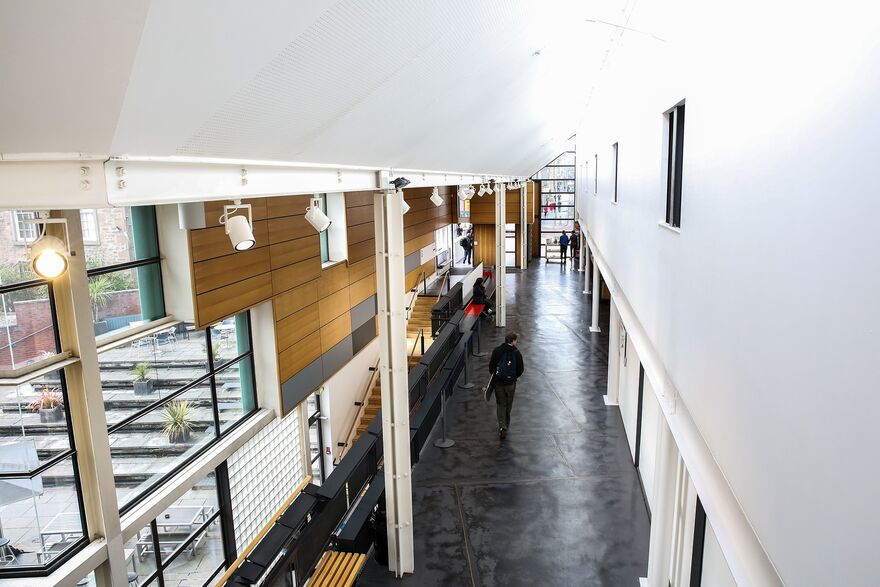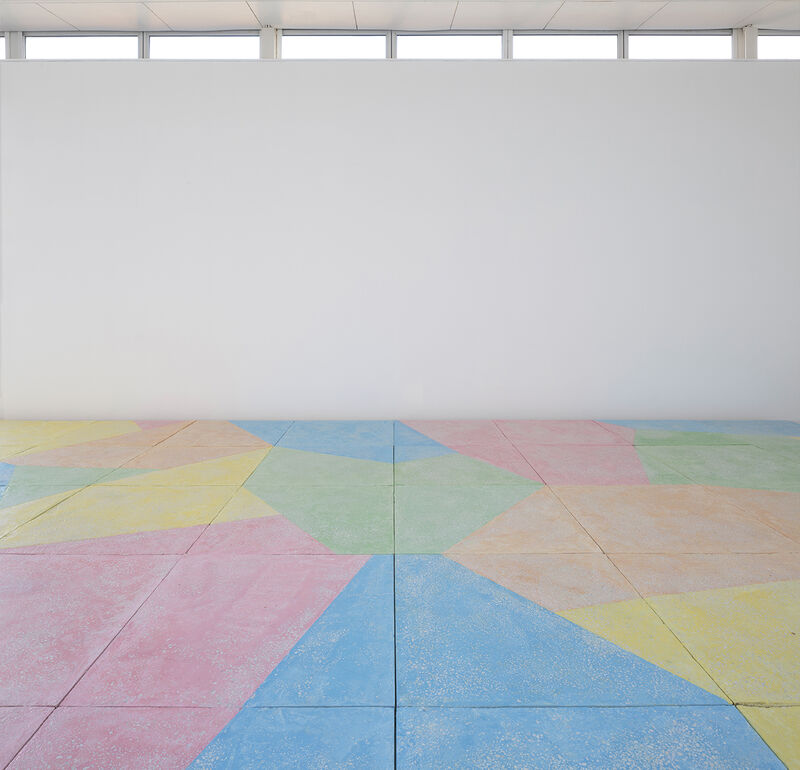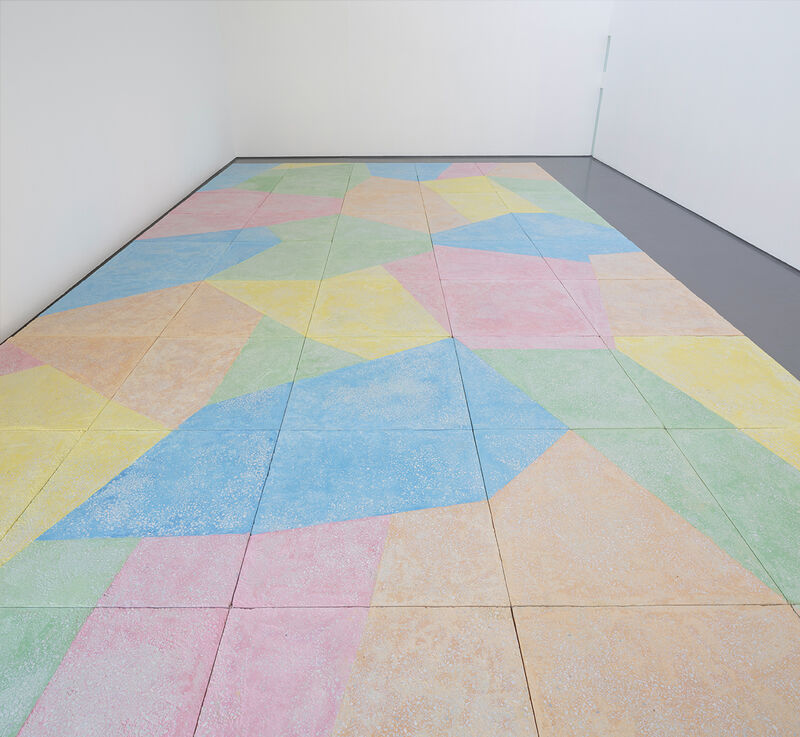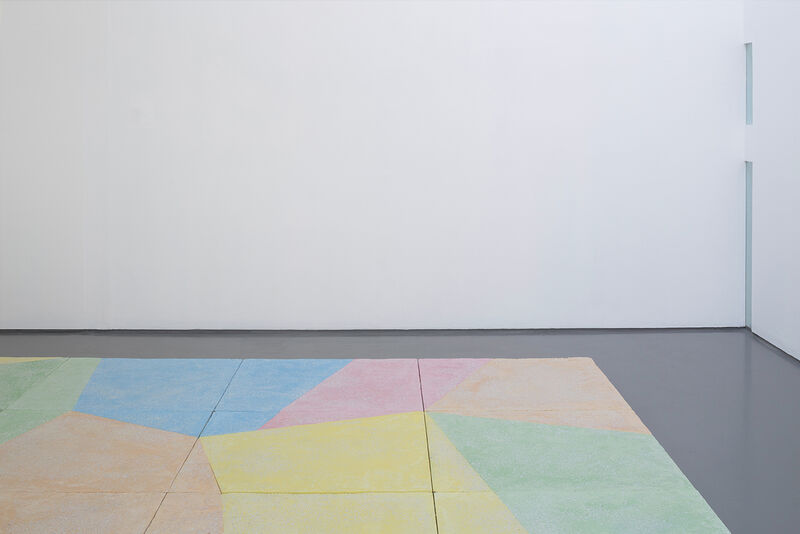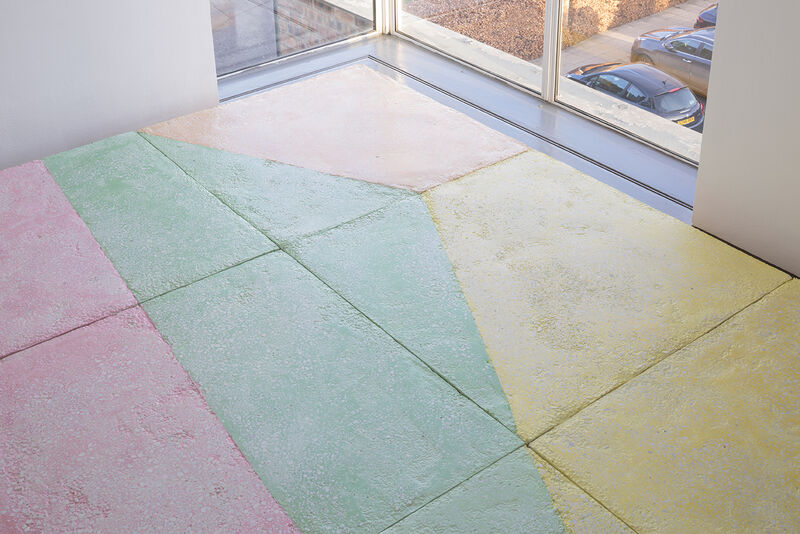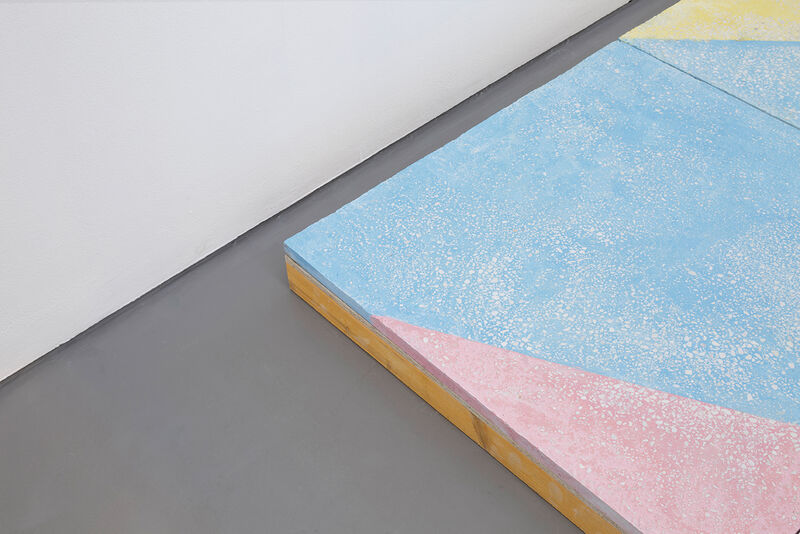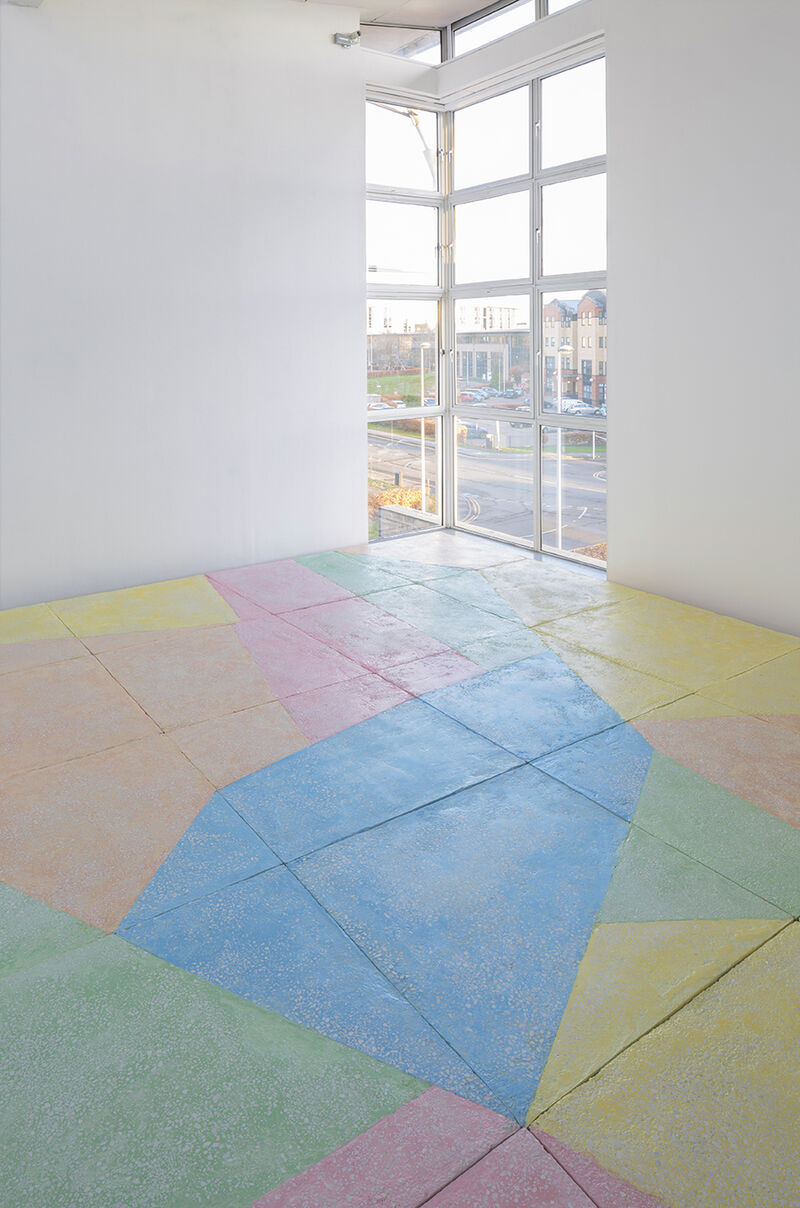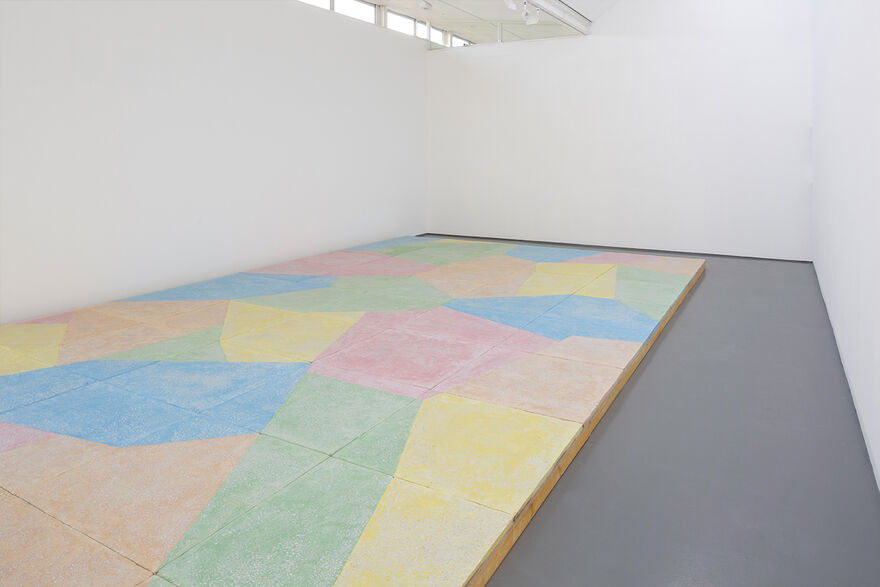
Andrew Lacon
Fragments
9 December 2017 - 25 February 2018
Andrew Lacon’s commissioned response to Gallery 1 at DCA was a bold and minimal undertaking. It took the form of a substantial yet subtle installation across the whole gallery that challenged our expectations regarding how artworks are presented and asked questions about how certain raw materials are understood and valued in different contexts across space and time.
Lacon has long been interested in how public displays of objects can explore relationships between national culture, social class and artistic intention, and this exhibition considered these ideas by focusing on one single raw material now synonymous with the history of art and architecture: marble.

The story of this work can be traced back to a journey the artist made from Mexico City to Birmingham in 2015, carrying a cotton rucksack filled with a stack of Mexican pink marble through customs. Aspects of this journey mirror Lacon's ongoing artistic investigation into the often complex political lives of materials: how they are obtained, appropriated, and used far from their places of origin. Fragments positioned these expansive ideas in a deceptively simple way, using specific colours, shapes and forms to hint at underlying narratives and overlooked histories.
For this project, which was Lacon’s first solo exhibition in a UK institution, he invited us to be active participants within his work, to re-think how we move through public spaces and encounter materials, objects and artworks in the world around us.

About the artist
Andrew Lacon (b.1985, Dudley) is based in Birmingham, having graduated from the Royal College of Art, London, in 2011. Recent exhibitions of his work and projects include: ‘Fugazi’, Division of Labour, London 2017; 'Image Music Text', IMT, London 2016; 'Radical Sabbatical', Eastside Projects and University of Birmingham 2016; 'Research Residency', Soma, Mexico (British Council & Grand Union) 2015; 'Display Show', Temple bar Gallery, Dublin 2015; ‘Andrew Lacon', Edel Assanti, London, 2015; 'Reference Works’, Guangzhou Library, China 2014/15. He is represented by Division of Labour, London.
Alongside his artistic practice, Lacon runs the artist- led project Recent Activity with artist Andrew Gillespie, curating a series of nomadic projects across the UK as well as a new project space in Birmingham.

